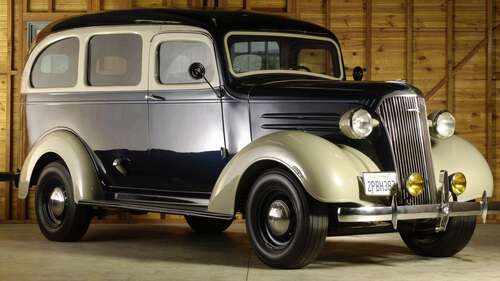
The second-generation Suburban ranks as the worst for its low production and lack of new features. During World War II, the manufacture of military products and vehicles for the war effort severely impacted the production of automobiles available to the public, and the Suburban was no exception. Chevrolet produced nearly 3,000 armored cars, manufactured aircraft engines, gun parts, and shells, and worked as a Grumman Aircraft subcontractor on wing sections and fuselage components. The automaker’s commitment to military vehicles and equipment limited the commercial production of new second-generation Suburban models to the years 1941, 1942, and 1946.
During the war years, Chevrolet offered two variants for the Suburban, one with rear panel doors and the other with tailgates replacing the panel doors. However, when American auto manufacturers reverted back to making automobiles from war materials in 1946, they had no designs for new models. Production instead resumed with the 1942 models.
The 1946 Chevrolet Suburban’s exterior styling was identical to the 1942 form, and the early units even lacked war-rationed chrome trim, but it showed up again on the vehicles produced later in the year. The same Stovebolt six-cylinder engine provided the power, albeit with a slightly greater displacement of 228 cubic inches and a higher output of 90 hp at 3,300 rpm and 165 lb-ft at 1,000-2,000 rpm. Power was sent to the rear wheels via a three-speed manual transmission and Chevy continued offering hydraulic brakes as standard equipment.

